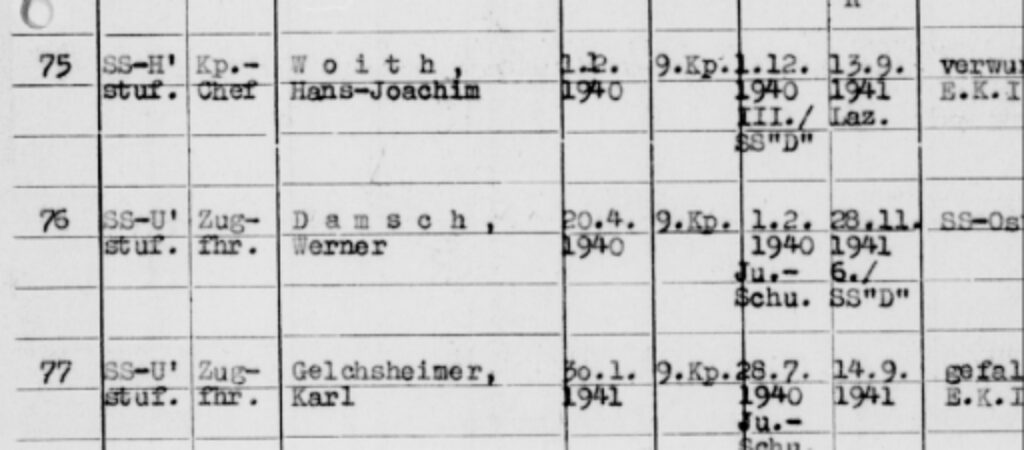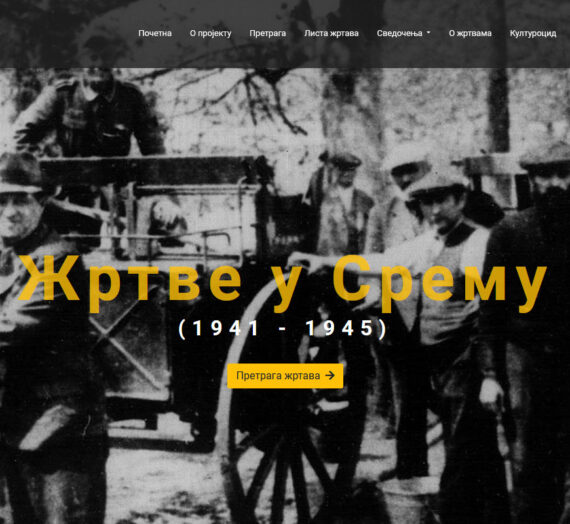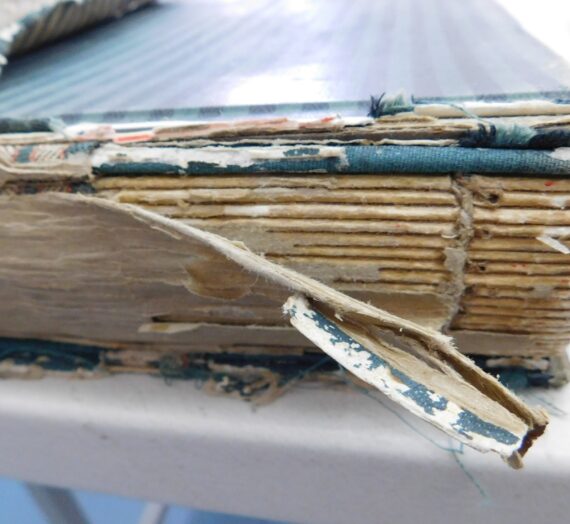AUTHOR: Richard Deveau-Maxwell
Premise
The Alibunar Massacre of 11th April 1941 is an event widely unknown and unreported in the list of atrocities committed by German forces, at least in the Western world. While it has been researched and reported in Serbia, it has never satisfactorily been explained who the perpetrators were and what happened to them in the aftermath of the Second World War.
This article aims to identify the perpetrators and their fates, several of whom were highly decorated; two received Germany’s highest decoration for valour, The Knight’s Cross of the Iron Cross. It can therefore be suggested that in the main, justice was denied to the victims of the atrocity, many of whom were POW’s and therefore under the protection of the Geneva Convention.
The author has spent five years investigating the events immediately following the invasion of Yugoslavia and as an independent researcher has endeavoured to recreate what occurred in Alibunar on the Easter weekend in 1941.

Prelude
On the morning of Friday 11th April 1941 when the SS-Division “Reich” received the order to cross the Rumanian border and advance in the direction of Alibunar, the division found the route’s poor quality roads clogged with other units of the XLI. Army-Corps, delaying the time the unit reached its allotted staging area. When the infantry regiments with their heavy weapons arrived at the staging area, SS-Oberführer Bittrich, commander of SS-Infantry-Regiment “Deutschland” made the decision to advance before the artillery regiment had fully emplaced in order to support the upcoming attack.
The advance began at 09.00, with the truck-borne infantry regiments rapidly gaining ground, despite the constant miring of the vehicles in thick mud with many becoming stranded and abandoned. Initial resistance by the 4th Royal Yugoslavian Cavalry Regiment was beaten back, and the dismounted infantry quickly found ground solid enough for vehicles, in order that the attack could resume. The SS-Division “Reich”, in competition with its Heer counterpart, Infantry-Regiment “Grossdeutschland” made the main route to Belgrade at Alibunar their objective in order to capture Belgrade as quickly as possible.
The 4th Cavalry Regiment of the Vršac garrison fought a tenacious yet desperate delaying action towards Alibunar from the direction of Banat Karlovac and Plandište, making good use of the terrain to slow the German advance with support from the Yugoslavian Air Force.
Commanding three squadrons of cavalry of the 4th Cavalry Regiment, Captain Jelenko Kitić wrote of the action,
“My squadrons were ordered to close the route from Banat Karlovac to Alibunar. Aware of the enemy’s numerical superiority, I decided to aim for surprise without engaging in prolonged combat. I engaged a platoon of engineers to mine the road and ordered my men not to open fire without my command. When the mechanised column came within range of the machine guns I gave the signal to fire. The Germans fell in swarms and a dozen vehicles were set on fire, ending the fight.”
Kitić estimated the Germans lost forty men dead, including several officers, though the official loss lists for the SS-Division “Reich” do not mention any losses in officers during the engagement. Kitić continued:
“As a sign of retaliation, the Germans killed many of our men still in the trenches, and a long column of prisoners stretched towards Alibunar. There we were hostages in the Serbian Orthodox church, but not for long.”
Lieutenant Svetolik Stefanović, commanding two platoons of the 330th Workers’ Company had withdrawn towards Alibunar following the displacement of the regional command authority the day before. Stefanović stated:
“Along the way we were joined by about 100 young men from Vršac, who were quickly armed, but with little ammunition. When we arrived in Alibunar the Germans attacked the other side of the village with armoured vehicles. Since I knew the 4th Cavalry Regiment was in the vicinity, I took my men and tried to find this unit. But we were weakly armed, and after a short firefight were overwhelmed.”
The regiment’s spearhead elements entered Alibunar at 17.30pm, with the regimental commander and his adjutant SS-Hauptsturmführer Paul Rohde accompanying the leading motorcycle reconnaissance battalion led by SS-Sturmbannführer August Zehender. The town was defended by scattered elements of the Royal Yugoslavian Army, who continued to fire on the SS men as they raced into the village. The troopers dismounted and immediately returned fire, whereupon a running street battle ensued. SS-Oberführer Bittrich wrote in a private handwritten letter dated 20.4.1941 describing the combat:
“Having sent my adjutant Haupsturmführer Rohde on ahead, I saw him rushing towards a building from which shots were being fired. I saw him disappear into the premises throwing another hand grenade against the entrance; once inside the building a shot rang out and he received a fatal shot to the chest.”
The building that Rohde ran into was the tavern of native German Karl Sauer, where a group of around thirty Yugoslav Army officers had taken refuge. When Rohde ordered the gathered officers to surrender, Svetozar Tomić – an employee of Sauer – shot him in the chest. This gesture of futile defiance by Tomić would have far-reaching consequences for the residents and soldiers present in Alibunar. It is unlikely he was aware he had just shot down the regimental adjutant as Rohde would not have been wearing his distinctive silver adjutant’s aiguillette, but a camouflage smock and helmet or visor cap; he would have looked to Tomić like any other SS trooper in the village at the time.

Massacre at Alibunar
What happened immediately following Rohde’s death is unclear, but with the following infantry battalions of the regiment still absent, the vanguard would have to hold its ground until the bulk of the regiment arrived. Although the motorcycle reconnaissance battalion composed of five companies was mobile and heavily armed, it remained in an unenviable and dangerous situation, surrounded by armed resistance, as Bittrich himself described:
“In the village the fire intensified and the remainder of the regiment was still about 1 ½ hours away; for me it is almost a miracle that no further casualties occurred, and that the enemy – about 2 Battalions and 3 squadrons – did not finish us off.”
When the regiment’s three infantry battalions arrived at Alibunar at around 18.30pm, the enemy resistance was quickly broken by the German grenadiers, and the sound of gunfire faded to a sporadic crackle interspersed with isolated shots.
Paul Rohde was a popular officer and held in high esteem by his peers and subordinates alike within the regiment and as the commander’s adjutant his loss was keenly felt. As the “Deutschland” consolidated its position in Alibunar, the regiment set up camp in the grounds of the Serbian Orthodox church, which also served as prisoner collection point. The SS grenadiers moved down the street, kicking doors in and indiscriminately dragging out the menfolk, many of whom were in uniform. The unfortunates were collected together and forced to march to the grounds of the church where a machine-gun had been set up. Around fifty civilians and Yugoslav Army prisoners of war were machine gunned and buried in a mass grave in the grounds of the Orthodox church. When the grave was full a new site was selected at Selište on the outskirts of Alibunar and the executions continued.
The 9./SS-Infantry-Regiment ”Deutschland” which was selected to take revenge for Rohde’s death was commanded by SS-Hauptsturmführer Hans-Joachim Woith who had recently succeeded Rohde as company commander. Woith was an embittered SA brawler who had been forcibly transferred to the SS-Verfügungstruppe from the SS-Totenkopfverbände – the SS units that administered the concentration camps – after incurring the displeasure of its brutal commander Theodor Eicke.

Directly beneath Woith in the 9th company’s chain of command were his two platoon leaders, SS-Untersturmführer Werner Damsch and Karl Gelchsheimer. It is not possible to ascertain which platoon carried out the murders, but both would have been present at the scene at which prisoners of war and civilians were executed.
Lieutenant Stefanović, who survived the killings by Woith’s men testified in a post war affidavit:
“When the Germans had disarmed us, their commander gave the SS men the order to shoot us all. They led us in groups of ten to the courtyard of Save Jana and there six SS men fired on us with machine-guns. Since I was an officer, I was in the first group, amongst our soldiers and young people. When I felt that the shot that hit me had struck the muscle in my left arm, I threw myself to the ground and feigned death.”
The reprisal killings carried on throughout the night and on the morning of the 12th April a field court was convened and a further twenty-eight men were convicted of “Freischarlerei” (illegal resistance) and sentenced to death. It is alleged that the field court was formed from members of the local “Kulturbund” (the judge appointed to the SS-Division “Reich”, SS-Sturmbannführer Wilhelm Wetzling did not arrive in Alibunar until 04:00hrs on 13th April).
A memorial was later erected in the grounds of the Orthodox church to remember the victims of the Alibunar Massacre; a war crime almost unheard of and undocumented in the history of the second world war in the Western world. Post war investigation by the Commission for the Investigation of the Crimes of the Occupiers concluded that around 200 people were murdered in Alibunar; 100 of which would have been in direct reprisal for the death of Bittrich’s adjutant.

Justice?
Despite the best intentions of the postwar Yugoslavian government to bring the perpetrators of the mass killing at Alibunar to justice, the guilty parties escaped without trial:
SS-Oberführer (Lieutenant-Colonel) Wilhelm Bittrich, commander of the “Deutschland” regiment was in French custody at the time of investigation, where he was sentenced to five years of imprisonment for the suspected killings of 17 French Resistance fighters. Bittrich was later active in the SS veteran’s organisation HIAG, where he served as its chairman for a number of years and died on 19.04.1979.
SS-Sturmbannführer (Major) Ernst Schützeck, commander of the 3rd battalion of the “Deutschland” regiment was killed in action on 17.11.1944.
SS-Hauptsturmführer (Captain) Hans-Joachim Woith, commander of the 9th company of the “Deutschland” regiment was killed in action on 01.07.1944.
SS-Untersturmführer (2nd Lieutenant) Heino von Goldacker, Ordnance Officer of the 3rd battalion was taken prisoner by American forces in 1945, but his extradition to stand trial in Yugoslavia was refused. He returned to Germany and died on 20.12.2000.
SS-Untersturmführer Werner Damsch, platoon leader in the 9th company of the “Deutschland” regiment was never investigated for his part in the killings and died at his home in Germany on 07.11.1994.
SS-Untersturmführer Karl Gelchsheimer, platoon leader in the 9th company of the “Deutschland” regiment was killed in action at Judinki in Russia on 14.09.1941.

The names of those executed on the 12th April 1941 are:
Bašaljić Ljubomir – Alibunar
Beličel Milan – Vršac
Bokšan Miša – Ferdin
Božović Velimir – Golubovac
Brdar Mile – Stari Lec
Cincar Dragomir – Ferdin
Gološin Borivoj – Veliki Gaj
Grba Djuro – Miletićevo
Ilić Spasoje – Alibunar
Jovanović Danilo – Gračac
Knežević Djura – Izvor
Knežević Ilija – Lika
Kovač Vasa – Dolovo
Lungulov Djurica – Veliki Gaj
Manojlović Miroslav – Guberevac
Milalović Dušan – Veliki Gaj
Milivoj Milan – Alibunar
Miljević Lazar – Veliki Gaj
Nenežić Dušan – Nikšić
Pešut Radovan – Banatski Sokolac
Pricar Dušan
Ravolović Ilija – Veliki Gaj
Robarov Petar – Vršac
Tošović Dušan – Vršac
Vojičić Mihajlo – Veliki Gaj
Vojičin Milan – Alibunar
Vujičić Ilija – Veliki Gaj
Živojin Aca – Alibunar



